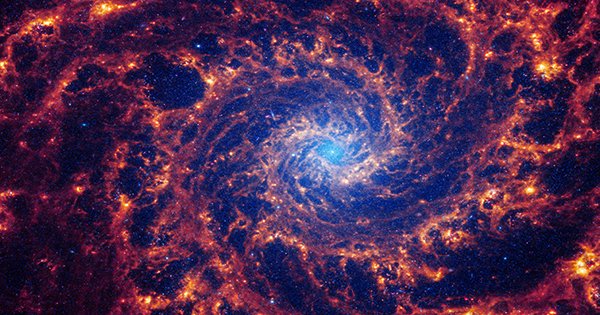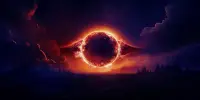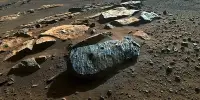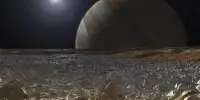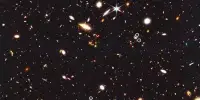A team of astronomers led by Dr. Lukas Furtak and Prof. Adi Zitrin from the Ben-Gurion University of the Negev discovered an incredibly red, gravitationally lensed supermassive black hole in the early universe while analyzing photos from the James Webb Space Telescope (JWST). Its colors indicate that the black hole is hidden behind a dense layer of dust, blocking much of its light. The team measured the black hole’s mass and discovered that it was substantially more massive than its host galaxy, as shown in more local examples.
The study was published in Nature
The JWST, deployed two years ago, has transformed our understanding of early galaxy formation. It has resulted in the observation of extremely early galaxies in greater number and brightness than previously predicted, as well as the discovery of several new sorts of objects.
The astronomers had discovered in JWST photos what appeared to be a lensed, quasar-like phenomenon from the early universe. Quasars are bright active galactic nuclei, which are supermassive black holes located in the centers of galaxies and actively accreting material.
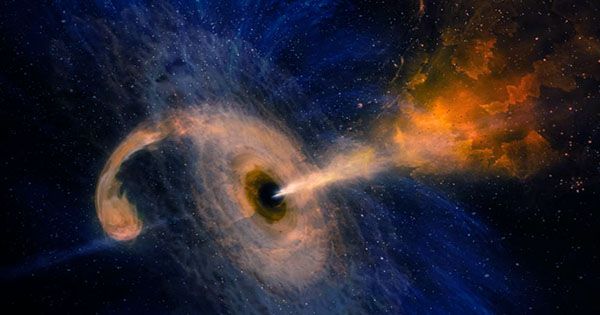
The accretion of material onto the black hole produces vast amounts of radiation, which outshine the host galaxy, resulting in a compact and bright, star-like appearance. Furtak and Zitrin detected the object using JWST photos taken for the UNCOVER program, which studied the field of a cluster of galaxies, Abell 2744, at unprecedented depths.
Because the cluster contains a vast amount of mass, it bends spacetime—or the pathways of light rays passing near it—creating a gravitational lens. The gravitational lens magnifies the background galaxies behind it, allowing astronomers to study galaxies that would otherwise be too distant to see.
“We were excited when JWST began transmitting its initial data. “We were scanning the data that had arrived for the UNCOVER program, and three very compact yet red-blooming objects stood out and caught our attention,” explains Dr. Lukas Furtak, a postdoctoral researcher at BGU and the primary author of the discovery publications. “Their ‘red-dot’ appearance immediately led us to suspect that it was a quasar-like object.”
Furtak and the UNCOVER group began investigating the object. “We used a numerical lensing model that we had constructed for the galaxy cluster to determine that the three red dots had to be multiple images of the same background source, seen when the universe was only some 700 million years old,” says Dr.
Zitrin, a BGU astronomer and lead author on the discovery articles.
“The object’s hues revealed that it was not a conventional star-forming galaxy. This provided additional support for the supermassive black hole idea,” says Prof. Rachel Bezanson of the University of Pittsburgh and co-leader of the UNCOVER initiative. “Together with its compact size, it became evident this was likely a supermassive black hole, although it was still different from other quasars found at those early times,” Dr. Bezanson said. Last year, the Astrophysical Journal revealed the finding of the distinctive red and compact object. But that was only the beginning of the narrative.
The researchers then collected and processed JWST/NIRSpec data from three photos of the “red dot”. “The spectra were just mind-blowing,” says Prof. Ivo Labbé, from Swinburne University of Technology and co-lead of the UNCOVER program. “By combining the signal from the three images together with the lensing magnification, the resulting spectrum is equivalent to ~1700 observing hours by JWST on an unlensed object, making it the deepest spectrum JWST has obtained for a single object in the early universe.”
“Using the spectra, we managed to not only confirm that the red compact object was a supermassive black hole and measure its exact redshift but also obtain a solid estimate for its mass from the width of its emission lines,” said Dr. Furtak, the lead author of the study. “Gas orbits in the gravitational field of the black hole and achieves extremely high velocities that are not found in other parts of the galaxy. Because of the Doppler shift, light emitted by the accreting material is redshifted on one side and blueshifted on the other, depending on its velocity. This causes the emission lines in the spectrum to broaden.
However, the measurement revealed another surprise: the black hole’s mass appears to be disproportionately large when compared to the mass of the host galaxy.
“All the light from that galaxy must fit into a tiny region the size of a modern star cluster. The gravitational lensing magnification of the source provided us with excellent size limitations. Even after squeezing all of the available stars into such a compact region, the black hole is at least 1% of the total mass of the system,” says Princeton University professor Jenny Greene, one of the lead authors of the latest work.
“Several other supermassive black holes in the early universe have now been found to show a similar behavior, which leads to some intriguing views of the black hole and host galaxy growth, and the interplay between them, which is not well understood.”
Astronomers do not know if such supermassive black holes form from star remnants or material that collapsed straight into black holes in the early cosmos.
“In a way, it’s the astrophysical equivalent of the chicken and egg problem,” adds the professor. “We do not currently know which came first—the galaxy or black hole, how massive the first black holes were, and how they grew.”
Since many additional “little red dots” and other active galactic nuclei have just been found with JWST, we hope to have a better notion soon.
